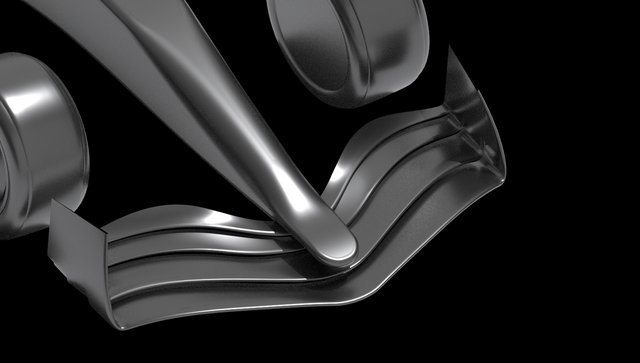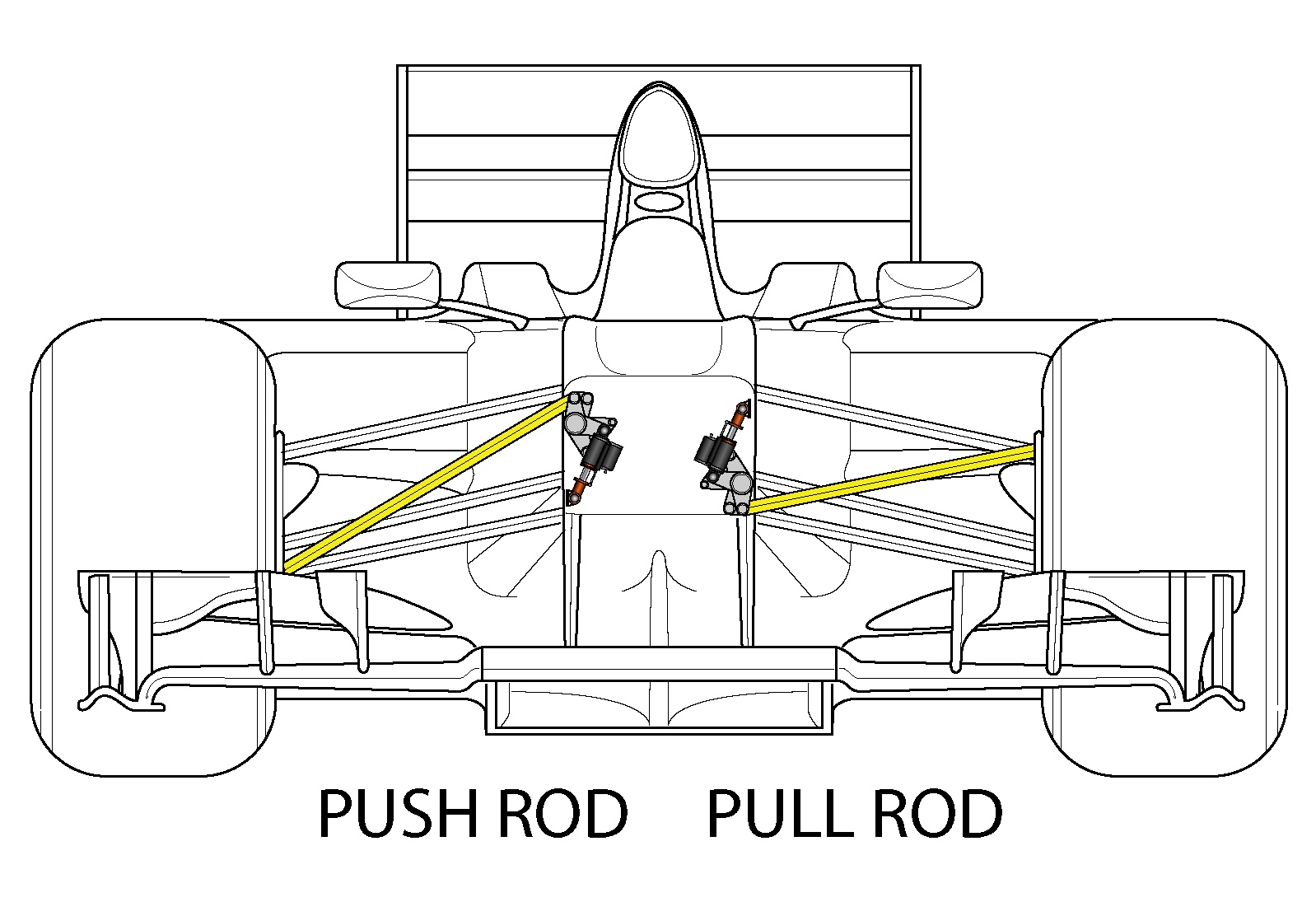I only said the other day that I doubt we will see a pull-rod front suspension and how much of a shame I thought that would be!!
- Login or Register
No account yet? Sign up
I only said the other day that I doubt we will see a pull-rod front suspension and how much of a shame I thought that would be!!
don't think that team will be doing that with the new regulations. its probably just round at the top like in this image.BlueCheetah66 wrote: ↑07 Jan 2022, 21:20There's two things I've noticed in those pictures. The sidepods seem to be quite low down compared to the bulkhead. Also, I'm not sure if this is just the lighting but it looks like they are following the same style of a quick thinning of the nose at the end of the chassis bulkhead


In the picture that you have shown it would not work great (high chassis structure, poor load paths), but if you go for a lower chassis structure (and nose) the main elements of the sprung part of the suspension can be mounted lower, a pull-rod can be made very thin (as it operates in tension at all times - great news for CFRP!)._cerber1 wrote: ↑08 Jan 2022, 10:06Changes to the Pull Rod suspension are possible, Skarb said. What can this potentially give us?
https://pbs.twimg.com/media/FIiPlAJWUAM ... name=large
Not sure, that would depend on how high the front of the chassis is. If the chassis is quite low (like on more modern pull-rod cars such as the Arrows A21 or Minardi PS01) the arms can be nearly parallel to the ground and the pullrod can be made very thin, which will reduce drag and weight.
They have been used as flow conditioners since the 1990stimbo wrote: ↑08 Jan 2022, 13:10If I understand the 2022 regs correctly, the suspension arms must be connected to the wheel within the "wheel rim". So it is impossible to use specially shaped uprights to raise the arms as much as possible anymore.
So if it is impossible to move suspension members out of the airflow, maybe the idea is to somehow use the front suspension arms as flow conditioners, such as already done with the rear suspension?
Yes, I meant even more so.ScrewCaptain27 wrote: ↑08 Jan 2022, 13:14They have been used as flow conditioners since the 1990stimbo wrote: ↑08 Jan 2022, 13:10If I understand the 2022 regs correctly, the suspension arms must be connected to the wheel within the "wheel rim". So it is impossible to use specially shaped uprights to raise the arms as much as possible anymore.
So if it is impossible to move suspension members out of the airflow, maybe the idea is to somehow use the front suspension arms as flow conditioners, such as already done with the rear suspension?
The front of the tub isn't much lower in '22.Stu wrote: ↑08 Jan 2022, 10:29In the picture that you have shown it would not work great (high chassis structure, poor load paths), but if you go for a lower chassis structure (and nose) the main elements of the sprung part of the suspension can be mounted lower, a pull-rod can be made very thin (as it operates in tension at all times - great news for CFRP!)._cerber1 wrote: ↑08 Jan 2022, 10:06Changes to the Pull Rod suspension are possible, Skarb said. What can this potentially give us?
https://pbs.twimg.com/media/FIiPlAJWUAM ... name=large
Downsides are that suspension elements become awkward to access (but with the minimal changes to cars trackside this is not too much of a downside! The other big downside is that more bulk tends to be added to the chassis low down, which can have an impact on aero performance.
To see how tidy this layout can be look at the McLaren MP4/4, that car was not too shoddy….
https://cdn.motorsportmagazine.com/wp-c ... -Senna.jpg
Which makes going to pull rods awkward. I’ve thought of another drawback. The teams are all using pushrod offset to control low speed weight distribution; limited for this year, but there will still be a benefit to using pushrods.jjn9128 wrote: ↑08 Jan 2022, 15:15The front of the tub isn't much lower in '22.Stu wrote: ↑08 Jan 2022, 10:29In the picture that you have shown it would not work great (high chassis structure, poor load paths), but if you go for a lower chassis structure (and nose) the main elements of the sprung part of the suspension can be mounted lower, a pull-rod can be made very thin (as it operates in tension at all times - great news for CFRP!)._cerber1 wrote: ↑08 Jan 2022, 10:06Changes to the Pull Rod suspension are possible, Skarb said. What can this potentially give us?
https://pbs.twimg.com/media/FIiPlAJWUAM ... name=large
Downsides are that suspension elements become awkward to access (but with the minimal changes to cars trackside this is not too much of a downside! The other big downside is that more bulk tends to be added to the chassis low down, which can have an impact on aero performance.
To see how tidy this layout can be look at the McLaren MP4/4, that car was not too shoddy….
https://cdn.motorsportmagazine.com/wp-c ... -Senna.jpg
I don't think the tunnel height is a limiting factor (very much WIP)Stu wrote: ↑08 Jan 2022, 16:05Which makes going to pull rods awkward. I’ve thought of another drawback. The teams are all using pushrod offset to control low speed weight distribution; limited for this year, but there will still be a benefit to using pushrods.
Tunnel sizes may now put an end to pull rods at the rear too.
So the driveshaft will be practically lying on the tunnel top?jjn9128 wrote: ↑08 Jan 2022, 17:27I don't think the tunnel height is a limiting factor (very much WIP)Stu wrote: ↑08 Jan 2022, 16:05Which makes going to pull rods awkward. I’ve thought of another drawback. The teams are all using pushrod offset to control low speed weight distribution; limited for this year, but there will still be a benefit to using pushrods.
Tunnel sizes may now put an end to pull rods at the rear too.
https://db3pap006files.storage.live.com ... pmode=none